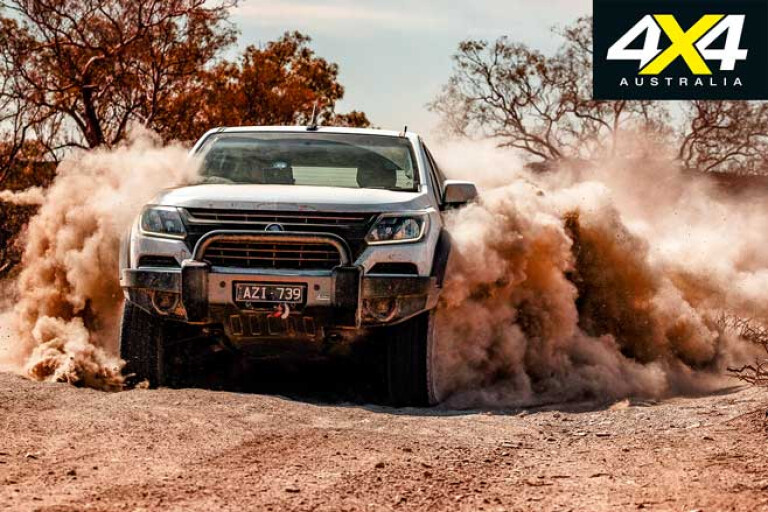
A mate of mine, and sometimes 4X4 Australia contributor, David Morley recently wrote an opinion piece for MOTOR magazine blaming, in a roundabout kind of way, the increase in the road toll on the rising popularity of dual-cab utes over conventional cars.
Dave pointed out that the road toll in Victoria was up by 26.3 per cent for the first 11 months of 2019 compared with the same period in 2018. He then questioned the government’s repeated and unfounded claims that speed is to blame for much of this increase.
However, as there have been no increases to the speed limit in that period and no real deterioration in the state of the roads – and as many level crossings in the state have been removed – there should have, in theory, been a reduction in the road toll over the period. Dave also points out that drivers are no more talentless than they’ve ever been, so that can’t be the reason either.
So, what’s going on? Dave surmises that vehicles must have become “less life-saving”.
This argument seems counter-intuitive because cars are said to be safer than ever before. Dave, however, is not referring to crash-worthiness, but to dynamic safety, and he goes on to argue that the growth in popularity of dual-cab utes has therefore skewed the road toll. “Utes – actually, let’s call them light-trucks, for that, thanks to their ladder-chassis construction and compromise tyres, is precisely what they are – just don’t have the dynamics of a conventional car,” Dave writes.
Having driven pretty much all of the dual-cab ute models sold in this country since 1994, I can only agree with Dave’s assessment – dual-cab utes certainly don’t have the dynamics of well-engineered, modern, conventional passenger cars.

Most utes are generally heavier, have a higher centre of gravity, have higher-profile and often Light Truck construction tyres, have rudimentary live-axle rear suspension with leaf springs, and run rear drum brakes. In addition, their ability to haul up to a tonne in cargo means there are some pretty major ride and handling compromises when they are either fully unladen or, conversely, loaded to the hilt. Sure, not all conventional cars are the last word in on-road dynamics, either, but as a general rule most cars offer better dynamics than most utes on the road.
Dave also points out that “utes have been late to the autonomous braking (and other safety tech) party”, and this point is of great importance. Utes definitely have been late to the safety tech party, with passenger cars and 4x4 wagons equipped with technology such as electronic traction control and vehicle stability control much earlier than utes. As for AEB, forward collision alert, lane-departure warning and adaptive cruise control, this kind of tech is only now starting to filter through to utes, while many passenger cars have had this kind of tech for some time.
Of those utes that are equipped with the latest safety tech, they are no doubt more ‘life saving’ than ever before, because if you can avoid a crash in the first place then you’re not going to contribute to the increase in the road toll.

Of the modern utes equipped with stability control and AEB (Ford Ranger, Mercedes-Benz X-Class, Mitsubishi Triton and Toyota Hilux), I reckon you’d be hard pressed to crash them, except through complete inattention or sheer stupidity. Throw one into a corner too hard and the stability control will generally ensure you don’t lose control. Forget to put your foot on the brake when the car in front stops then hopefully the AEB will save your bacon. And over the next few years advanced safety tech like this will no doubt become the standard in all 4x4 utes.
Dave told me his column caused quite a stir among many who read it, with many ute owners leaping to the defense of their vehicle of choice; but regardless of how much electronic cleverness is thrown at utes, while they run old-school chassis architecture, suspension and brakes, they’re still not going to be as dynamically sound as equally equipped conventional cars. But, hey, neither are most 4x4 wagons … and if you want a vehicle that’s capable on the road as well as off it, then there will always be compromises.

Of course, most enthusiast four-wheel drivers are aware of this and will drive their vehicles accordingly, but for those with less of an appreciation of the vehicle they are driving, we can only hope vehicle manufacturers start adding the full suite of new safety tech to utes as soon as it becomes available, rather than trickling it down from luxury cars to family cars to 4x4 wagons and lastly to utes.
P.S. Dave has been invited to a meeting with the folk at ANCAP (Australian New Car Assessment Program) to discuss some of the points he raised in his MOTOR column. If anything relevant comes out of it, we’ll let you know.

COMMENTS